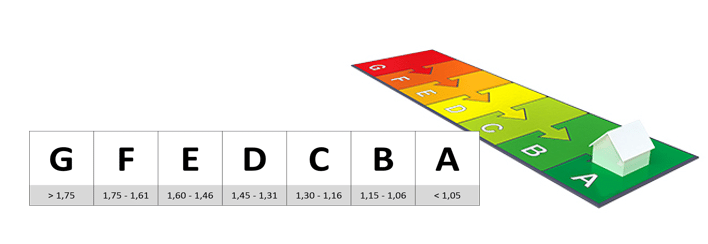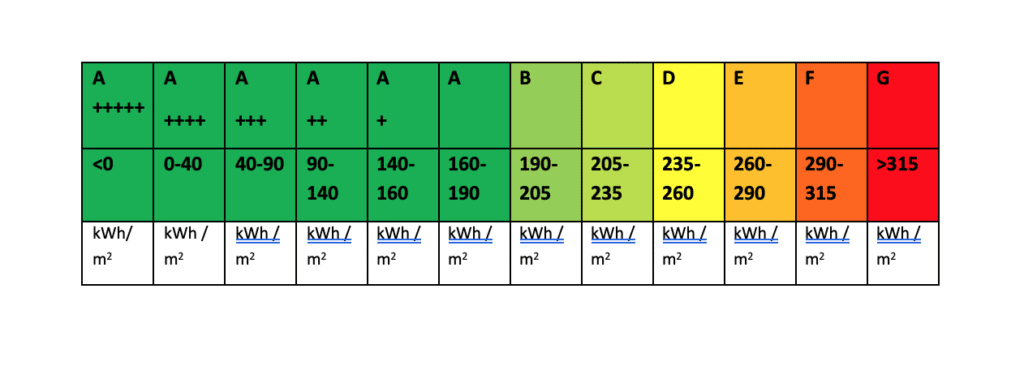
The NTA 8800 certification: what does it mean for you?
A new EPC method arises: the NTA 8800 EPC. Originally slated for 1 July 2020, its launch was postponed to 1 January 2021. But what is the NTA 8800 EPC and what does it mean for you? Find out in this article.
What is a building’s EPC?
Every building has an EPC. As we make efforts to transition to a sustainable society, the energy consumption of buildings is a subject of increasing concern. That’s why the EPC has an increasingly important role to play. These EPCs have both an internal and an external function. To the outside world, they show how energy-efficient or energy-guzzling a building is. And for the users of the building itself, the EPC can help identify the places where steps can be taken to save energy.
What is NTA 8800?
In 2021, a new method was introduced in The Netherlands for both residential and non-residential buildings: the NTA 8800 certification. The best thing about the new methodology is that it covers both new buildings and existing buildings for residential and non-residential use under the same standard. Having one standard makes things a lot clearer.
Another idea behind the NTA 8800 certification was the desire to increase the level of detail on an EPC to give a more realistic picture of the reality. The EPCs we know today are expressed as the energy index. As the figure below shows, an energy index between 1.30 and 1.16 results in an EPC rating of C.

NTA 8800 certification looks at BENG requirements
Since 2021, EPCs look different. Instead of the energy index, the building’s energy rating is based on a value expressed in kWh/m2/yr. This value is also used in the BENG (Nearly Energy Neutral Building) requirements. There are three categories of these BENG values:
- BENG 1: max. energy requirement (kWh/m2)
- BENG 2: max. primary fossil energy consumption (kWh/m2)
- BENG 3: min. share of renewable energy (%)
What does this mean for the current breakdown of EPC classes?
Under the NTA 8800 certification, EPCs are based on BENG 2 requirements. This also takes into account the use function of a building. There are separate EPC classes for each use function. For example, the energy consumption of offices is placed under the following EPC classes:

The differences between the old and new methodology
As a building owner, what will the NTA 8800 EPC certification mean for you? A study comparing both methods shows that 55% of buildings will retain the same EPC. The rest “jump” on the EPC rating: 79% of these move by one EPC rating, and 21% of them jump 2 or more EPC ratings. In some cases, the move is upwards, and in others downwards. On average, however, the EPCs will remain largely the same. However, for individual buildings or portfolios, the new EPC may come out better or worse.
More details, for a more precise calculation
In the NTA 8800 certification methodology, individual buildings with all-electric systems score better than buildings with gas-fired systems. According to the National Energy Outlook (NEV 2017), the generation efficiency of the Dutch electricity network will be increasing significantly. This increase, from 39% to 69%, is due in part to the increase in wind turbines and solar panels. The improvement in efficiency has an effect on the energy performance of buildings. Because the NTA 8800 uses a calculation of the primary fossil energy consumption, things like heat pumps mean a high efficiency: higher than in the old calculations, under which fossil fuel consumption had different, smaller role.
In addition, the NTA 8800 certification includes more details, allowing for more accurate calculations. This does mean some extra work for building owners, who will have to provide more documents and look up more figures. Because of this, a good record-keeping system will make a big difference for this new method. Ultimately, the NTA 8800 certification will mean more accurate EPCs that are a better reflection of the reality. Curious about the experiences with NTA 8800? Read the first experiences here.
What does the NTA 8800 certification mean for the EPC C obligation in 2023?

It has been on the horizon for some time: the EPC C requirement for offices in 2023. Currently, EPC C is set at an energy index of 1.3 or better. From 2021, this is being changed to a value between 190-250 kWh/m2. Consequently, an individual building may score better or worse under the new calculation.
For example:
A building that still has EPC C today (and thus does not need any extra investments) may have a different EPC from 2021 onwards. The NTA 8800 certification may put the building at a lower rating, in which case additional investments will be necessary to keep the property lettable after 2023.
Are you ready to start looking at where you can save energy? If so, contact our consultants. We will be happy to help you on your way!




